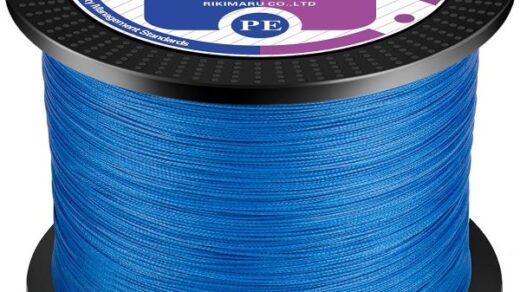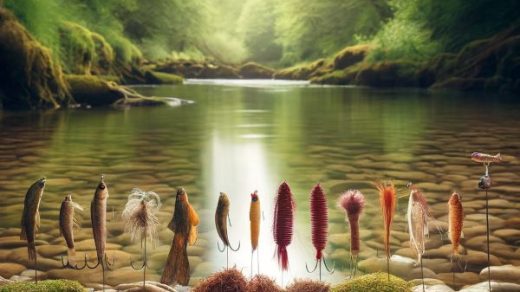A Guide to Angling Success
In the tranquil world of angling, where the rhythm of water meets the patience of the fisherman, few pursuits offer the thrill and challenge quite like bass fishing from the bank. There’s a certain allure to standing firm on solid ground, casting your line into the depths, and enticing the elusive bass to strike. This age-old practice, steeped in tradition and finesse, requires more than just luck – it demands skill, strategy, and a deep understanding of the aquatic environment.
As the sun dances across the water’s surface and the breeze whispers through the reeds, bankside bass fishing beckons both novices and seasoned anglers alike. Unlike its counterparts aboard boats or kayaks, fishing from the bank presents unique opportunities and challenges. It’s a dance between man and nature, where every cast holds the promise of a thrilling battle between angler and bass.
In this comprehensive guide, we delve into the artistry of bankside bass fishing, exploring the tactics, techniques, and secrets that lead to success. From selecting the perfect spot along the shoreline to mastering the art of lure presentation, each aspect plays a crucial role in the pursuit of the ultimate prize – a trophy-worthy bass.
Join us as we embark on a journey into the heart of bankside bass fishing, where patience is rewarded, and every cast brings us closer to nature’s elusive marvels.
Choosing the Perfect Bankside Location
Selecting the ideal bankside location is the cornerstone of successful bass fishing. While the allure of casting into any body of water may be strong, strategic thinking and observation are key to maximizing your chances of a fruitful catch. Here, we explore the nuances of choosing the perfect spot to set up your angling adventure.
- Understanding Bass Behavior: Before casting your line, take a moment to observe the water’s edge and understand the behavior of bass. These predatory fish are known to lurk in areas with ample cover and structure, such as submerged logs, overhanging branches, or underwater vegetation. Look for signs of activity, such as baitfish schooling or surface disturbances, which indicate the presence of bass.
- Targeting Structure and Cover: Once you’ve identified potential bass habitats, focus your attention on areas rich in structure and cover. Bass are ambush predators, relying on stealth and surprise to capture their prey. Look for natural features like rocky outcrops, fallen trees, and weed beds, which provide shelter and concealment for bass awaiting their next meal.
- Considering Water Conditions: Pay close attention to the current water conditions, as they can greatly influence bass behavior. In warmer months, bass may seek out deeper, cooler waters during the heat of the day, while in cooler months, they may move to shallower areas to bask in the warmth of the sun. Factors such as water clarity, temperature, and oxygen levels also play a role in determining bass activity.
- Accessibility and Safety: While the temptation to venture deep into the wilderness may be strong, prioritize accessibility and safety when choosing a bankside location. Look for spots with easy access to the water, ample space for casting, and minimal obstacles that could impede your movement or pose safety risks. Remember to respect private property rights and obtain any necessary permits or permissions before fishing in unfamiliar areas.
Essential Gear and Tackle for Bankside Bass Fishing
When venturing into the realm of bankside bass fishing, having the right gear and tackle can make all the difference between a successful outing and a day of frustration. In this section, we explore the essential equipment every angler should have in their arsenal for targeting bass from the bank.
- Fishing Rod and Reel: Selecting the appropriate rod and reel combo is paramount for bankside bass fishing. Opt for a medium to medium-heavy spinning or baitcasting rod, ranging from 6 to 7.5 feet in length, to provide the necessary strength and sensitivity for battling bass in various conditions. Pair it with a quality reel featuring a smooth drag system and sufficient line capacity to handle the powerful runs and dives of bass.
- Fishing Line: Choose a high-quality fishing line that matches the rod and reel setup and the fishing conditions you’ll encounter. Monofilament, fluorocarbon, and braided lines each offer unique advantages, so consider factors such as visibility, strength, and sensitivity when making your selection. Fluorocarbon lines are often preferred for their low visibility and abrasion resistance, ideal for targeting wary bass in clear water.
- Terminal Tackle: Stock your tackle box with an assortment of hooks, weights, and terminal tackle to accommodate different fishing techniques and presentations. For bankside bass fishing, popular hook styles include offset worm hooks, EWG (Extra Wide Gap) hooks, and flipping hooks, paired with appropriate weights such as bullet weights, split shot, or tungsten weights. Be sure to carry a variety of sizes to match the bait and fishing conditions.
- Lures and Baits: Experimentation is key when it comes to lure selection for bankside bass fishing. Carry an array of artificial lures and natural baits to cover a range of presentations, including soft plastic worms, creature baits, swimbaits, crankbaits, spinnerbaits, and topwater lures. Tailor your lure choice to match the prevailing weather conditions, water clarity, and bass behavior, and be prepared to adapt based on their response.
- Tools and Accessories: Don’t overlook the importance of essential tools and accessories for bankside bass fishing. Carry items such as pliers, scissors, hook removers, and a landing net to handle fish safely and efficiently. Additionally, pack sunscreen, insect repellent, polarized sunglasses, and a hat to protect yourself from the elements and enhance your comfort during long days on the water.
- Safety Equipment: Prioritize safety by carrying essential safety equipment, including a personal flotation device (PFD), especially when fishing from rocky or remote bankside locations. Keep a fully charged cell phone or communication device on hand for emergencies, and familiarize yourself with local regulations and emergency procedures before heading out.
Effective Techniques for Bankside Bass Fishing
Mastering a variety of fishing techniques is essential for maximizing your success when targeting bass from the bank. In this section, we delve into some of the most effective techniques and presentations for enticing bass to strike.
- Texas Rig: The Texas rig is a versatile and weedless presentation that excels in snaggy or vegetation-rich areas often found along the bank. To rig, insert a bullet weight onto your line, followed by a hook (commonly an offset worm hook) and your preferred soft plastic bait, such as a worm or creature bait. The weight allows for accurate casting and helps the bait penetrate cover, while the weedless design reduces the risk of snags.
- Jig Fishing: Jig fishing is another effective technique for probing bass hideouts along the bank, particularly in rocky or submerged structures. Choose a jig head with a skirted trailer or soft plastic craw imitator, and customize the color and trailer selection based on water clarity and bottom composition. Work the jig slowly along the bottom, using subtle hops and pauses to mimic a crawfish or injured baitfish, enticing nearby bass to strike.
- Topwater Lures: There’s nothing quite as exhilarating as witnessing a bass explode on a topwater lure in the shallows. Topwater lures such as poppers, buzzbaits, and frogs are particularly effective during low-light conditions or when bass are actively feeding near the surface. Experiment with different retrieves, pauses, and cadences to trigger aggressive strikes from lurking bass patrolling the bank.
- Spinnerbaits and Chatterbaits: Spinnerbaits and chatterbaits are highly versatile lures that excel in covering water and enticing reaction strikes from bass. With their flashing blades and vibrating action, these lures are effective in both open water and around structures along the bank. Vary the retrieve speed and depth to mimic fleeing baitfish or injured prey, eliciting predatory instincts from nearby bass.
- Drop Shot Rig: The drop shot rig is a finesse technique ideal for targeting bass holding in deeper water or suspended off the bank. Rig a finesse worm or small soft plastic bait above a drop shot weight using a Palomar knot, leaving a tag end of approximately 8-12 inches. Present the rig with subtle twitches and shakes, enticing bass with a tantalizingly suspended meal that’s hard to resist.
- Pitching and Flipping: When targeting tight cover or precise targets along the bank, pitching and flipping techniques shine. Use a compact baitcasting setup with heavy line and a stout rod to deliver accurate casts into dense cover or under overhanging vegetation. Employ a flipping or pitching motion to present your bait quietly and efficiently, enticing wary bass hiding in the shadows.
Understanding Bass Behavior and Seasonal Patterns
To truly unlock the secrets of successful bankside bass fishing, it’s essential to gain insight into the behavior and seasonal patterns of these elusive predators. Bass are highly adaptable creatures, and their movements and feeding habits are influenced by a variety of factors, including water temperature, weather conditions, and the availability of prey. In this section, we delve into the intricacies of bass behavior throughout the seasons, providing valuable insights to enhance your angling success.
- Spring: As winter loosens its grip and temperatures begin to rise, bass emerge from their winter haunts in search of food and suitable spawning grounds. During the pre-spawn period, bass become increasingly active and aggressive, feeding voraciously to replenish energy reserves. Target shallow areas with warming water temperatures, such as flats, coves, and shallow bays, where bass congregate to prepare for the spawning ritual. Key baits and techniques include lipless crankbaits, spinnerbaits, and soft plastic craws worked slowly along the bottom to mimic foraging behavior.
- Summer: The dog days of summer bring warm water temperatures and heightened bass activity, presenting prime opportunities for bankside anglers. Bass seek out cooler, oxygen-rich waters during the heat of the day, often retreating to deeper areas or seeking refuge in shade and cover along the bank. Target shady areas, submerged structures, and deeper drop-offs where bass congregate to escape the heat and ambush passing prey. Experiment with a variety of lures and presentations, including deep-diving crankbaits, jigs, and soft plastic worms rigged on a Texas or Carolina rig, to entice bass in their summertime lairs.
- Fall: As temperatures begin to cool and the days grow shorter, bass undergo a seasonal transition, shifting their focus from feeding to fattening up for the impending winter months. The fall feeding frenzy, known as the “fall turnover,” sees bass aggressively feeding on baitfish and other prey in preparation for winter. Target transitional areas such as points, channel swings, and creek mouths where bass intercept migrating baitfish. Key baits and techniques include lipless crankbaits, jerkbaits, and swimbaits retrieved erratically to mimic fleeing prey.
- Winter: As water temperatures plummet and cold fronts grip the landscape, bass become less active and retreat to deeper, more stable environments to conserve energy. Focus your efforts on deeper channels, submerged structures, and thermal refuges where bass seek refuge from the chill. Slow down your presentation and opt for finesse techniques such as jigging spoons, drop shot rigs, and hair jigs to tempt lethargic bass into striking.
Conclusion:
In the serene realm of bankside bass fishing, where the gentle lapping of water meets the rustle of wind-blown foliage, each cast is a testament to the timeless dance between angler and fish. As we conclude our exploration of this artful pursuit, it’s evident that success in bankside bass fishing hinges not only on the right gear and techniques but also on a deep appreciation for the natural world and its inhabitants.
From the tranquil beauty of a mist-covered sunrise to the heart-pounding excitement of a bass breaking the surface in pursuit of prey, bankside bass fishing offers a symphony of experiences for anglers of all skill levels. It’s a journey of discovery and connection, where each outing unveils new insights into the behavior of bass and the delicate balance of their aquatic habitat.
As you embark on your own bankside adventures, remember to approach each cast with patience, curiosity, and reverence for the wonders of nature. Whether you’re standing on the shores of a secluded pond, a winding river, or a vast reservoir, the thrill of the chase and the camaraderie of fellow anglers unite us in our shared pursuit of bass fishing excellence.
So, gather your gear, heed the call of the water, and embrace the challenges and rewards that await along the bank. For in the timeless pursuit of bankside bass fishing, the truest treasures lie not only in the trophies we land but in the memories we create and the connections we forge with the natural world and with each other.




